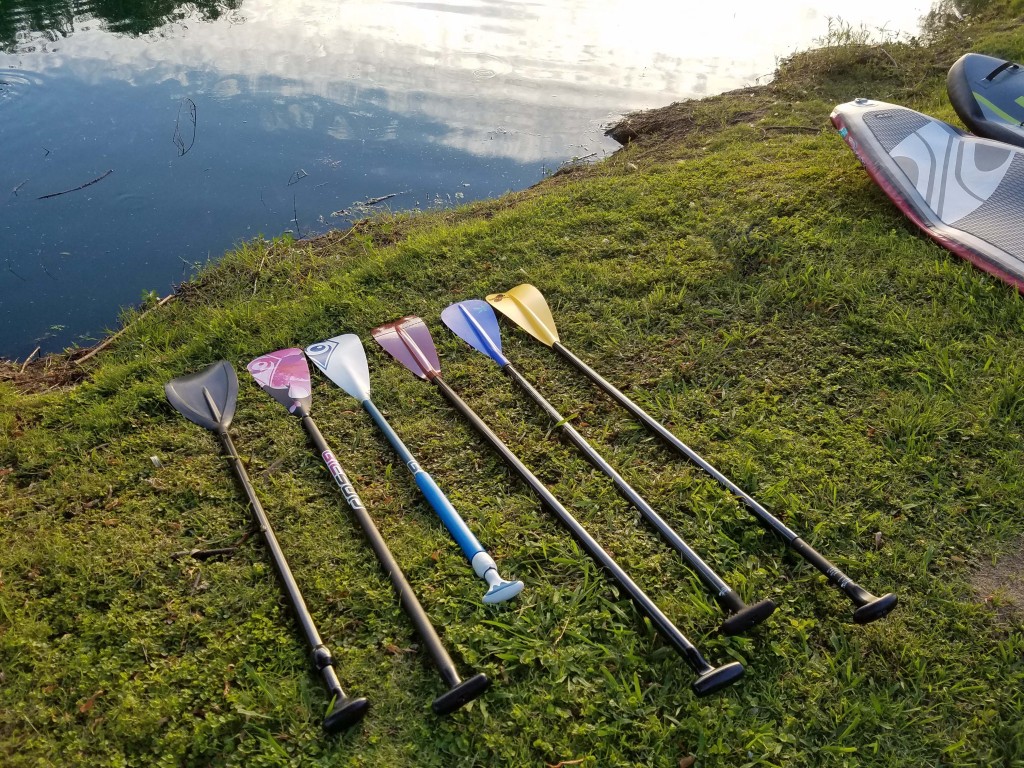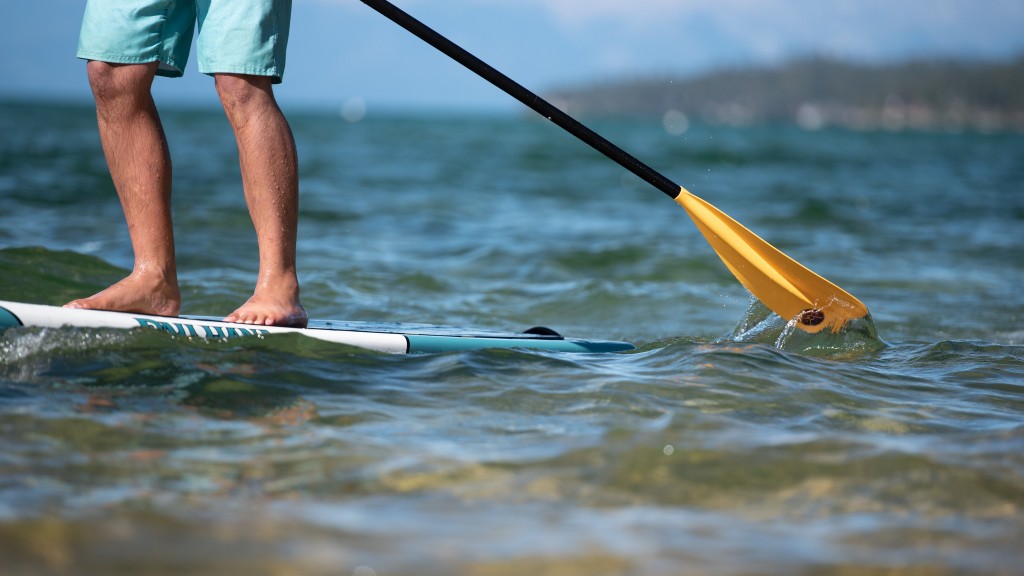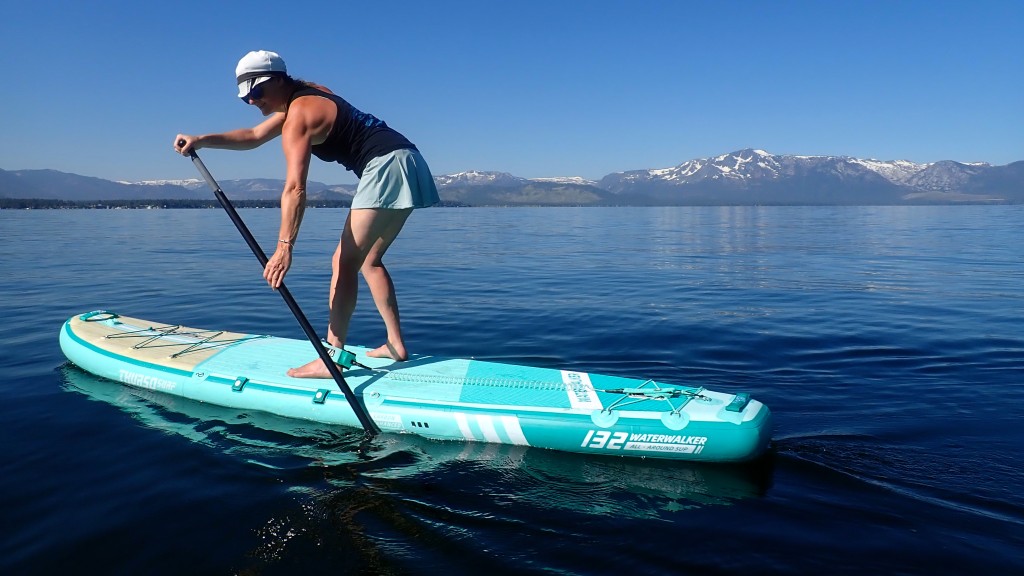To find out which SUP paddles are truly the best of the best, we checked out dozens of different products, then bought some of the most promising paddles on the market and tested them side-by-side. We spent months comparing and scoring each of the products, testing them in lakes, rivers, ponds, and any other body of water we could get a board in. We enlisted a panel of judges to rate not only the performance of each paddle but also their ease of adjustment and construction quality. We divided up all the tests into five weighted rating metrics for each SUP paddle and scored their performance in each. After that, it was easy to see which paddles came out on top and which got marginalized by the competition.
Performance
First and foremost, we ranked and scored how each of these paddles performed on the water. This is our most significant metric, and we tested this by paddling with each paddle. A lot. We traveled with these paddles to a variety of locations, seeking conditions that would challenge us and them. We tested them out with different paddleboards and in different weather and water conditions ranging from mirror-like calm waters to rough and wavy. We also had paddlers of all ages, body types, various heights, and skill levels put together, paddle, and transport each contender before aggregating the data into a final assessment. Specifically, we scored each SUP paddle on a few things: paddle catch, power stroke, exit, recovery, and feel.
Paddle Catch
When scoring how well each paddle caught the water, we were looking for paddles that cleanly and smoothly enter the water and set you up nicely for the power stroke. This primarily depends on the blade's type and shape, whether it is a teardrop, scooped, or rectangular paddle, and if it is flat, concave, or a dihedral.
Power Stroke
This is the portion of your paddle stroke that actually propels you forward. We were looking for paddles that were stable while pulling through the water and that efficiently transferred energy into forward motion. We also scored paddles based on the amount of flutter they had, with less flutter scoring higher. Flutter is when the water shedding from the side of the paddle blade creates vortices and causes the blade to oscillate and shake as you pull it through the water, wasting energy and slowing you down.
Exit
How a paddle exits the water is probably the hardest part of paddling performance to judge, as there usually aren't marked differences between paddles. But we did our best and awarded the most points to paddles that exited the water cleanly without a lot of excess splashing or anything weird that might knock you off course.
Recovery
Recovery is the part of the paddle stroke that is out of the water as you get set up for the next catch. Performance here largely depends on the weight and balance of each paddle, as well as the ergonomics of the grip. Ideal paddles are balanced in a way that they feel practically weightless but have enough heft in the blade to create momentum and help create an even cadence while paddling. We scored paddles that provide both a comfortable and secure grip the highest and deducted points from products that hurt our hands or caused us to almost drop the paddle when switching hands or paddling intensely.
Feel
While this metric is based on personal preference, there are some aspects that every paddler can agree upon. The comfort of the grip in your hand, the ability to grasp the hilt easily and solidly, texture, location of the locking mechanism, and attachment seams can all affect your skills and overall experience.
Weight
Our second metric focused on how much each adjustable SUP paddle weighs. While the pound and a half or so between the lightest and heaviest models might not seem like that much, you start to notice a difference after an hour or so of paddling. We awarded points exclusively based on measured weight, but we noticed that some of the heavier paddles are so well-balanced that they conceal their bulk.
Ease of Adjustment
In this metric, we looked at the overall ease or difficulty of length adjustment. However, we excluded the locking mechanism's performance in this metric, as we have another metric devoted entirely to that. Paddles that performed well are easy to slide and have graduations for the different heights for easy visual reference. The best paddles are so simple to adjust that you can easily do it on the water even in choppy conditions, allowing you to fine-tune the length of your SUP paddle to best match the current conditions and your style.
Locking Mechanism
As mentioned above, we devoted an entire metric to the performance of the locking mechanism of each paddle, as it is such an integral part of each product. Our favorite locking mechanisms do not take a ton of effort to engage or release yet still hold the paddle shaft securely at the desired length. In general, adjustable SUP paddles use a LeverLock system, the TwinPin or push-button system, or a locking cam lever on the paddle's shaft.
Of these, we found the LeverLock to be the best, followed by pin or push-buttons and then the locking lever on the shaft. The main reason the shaft locking lever scores the lowest is the need for an additional tool to adjust the clamping pressure.
If you're the exclusive user of your paddle and you don't plan on traveling with it, you should only have to adjust your paddle once. Depending upon the locking mechanism and how often you adjust it, they can loosen over time or even while on the water, and nothing can ruin a day of SUPing faster than having a paddle that won't stay together.
Construction Quality
Paddle performance has everything to do with the quality of the construction. A well-made paddle is durable, sturdy, and well-balanced. We compared the materials used to construct each paddle and the way companies chose to use them. In some cases, we were surprised at the creative ways in which paddles are designed and built to reduce weight while retaining durability and aesthetics.
We studied each paddle as a whole and analyzed the locking mechanisms and ways in which the blades were attached. We transported, paddled, put together, and pulled apart each paddle multiple times to evaluate how well they stood up to use and, in some cases, abuse.













